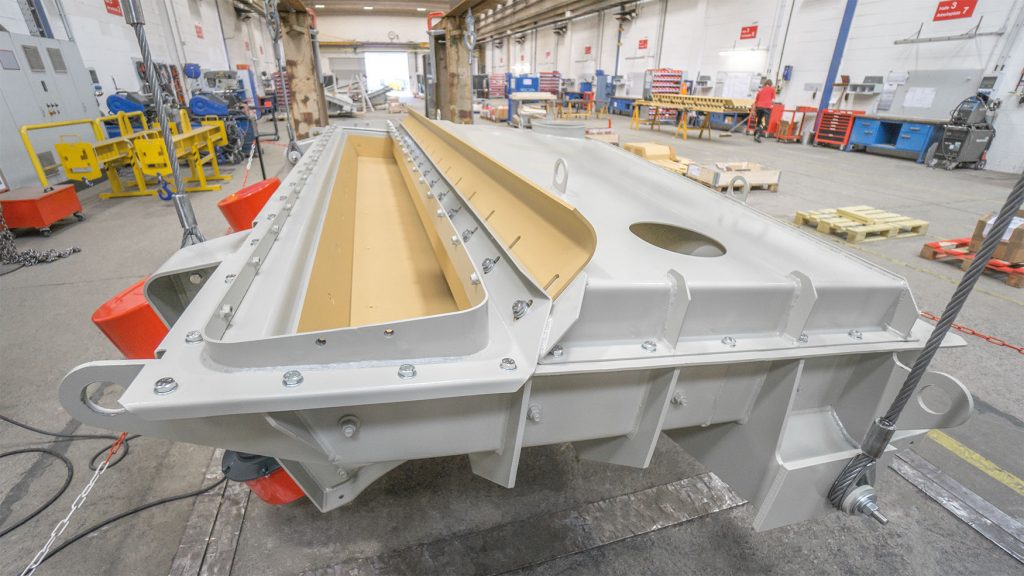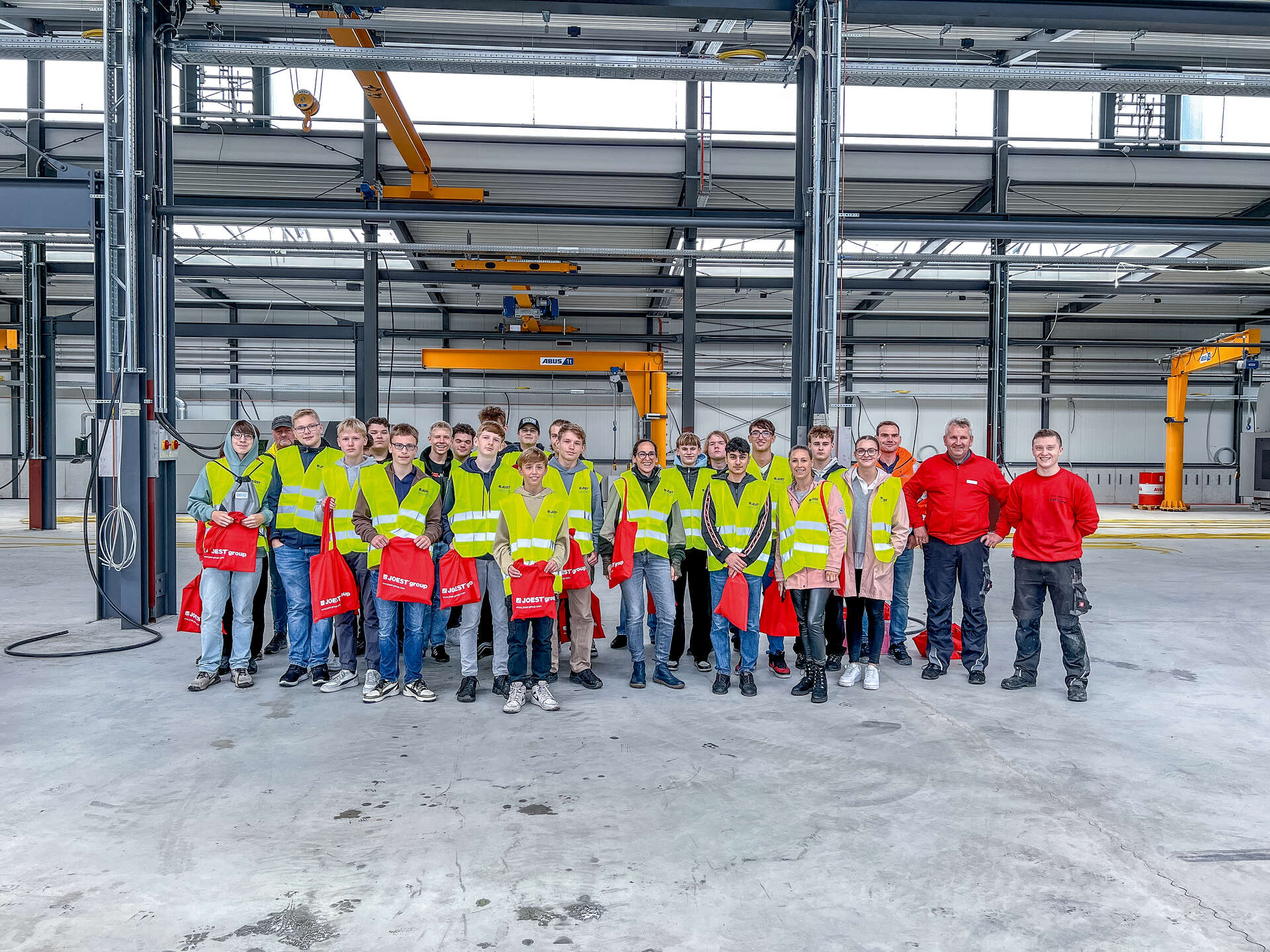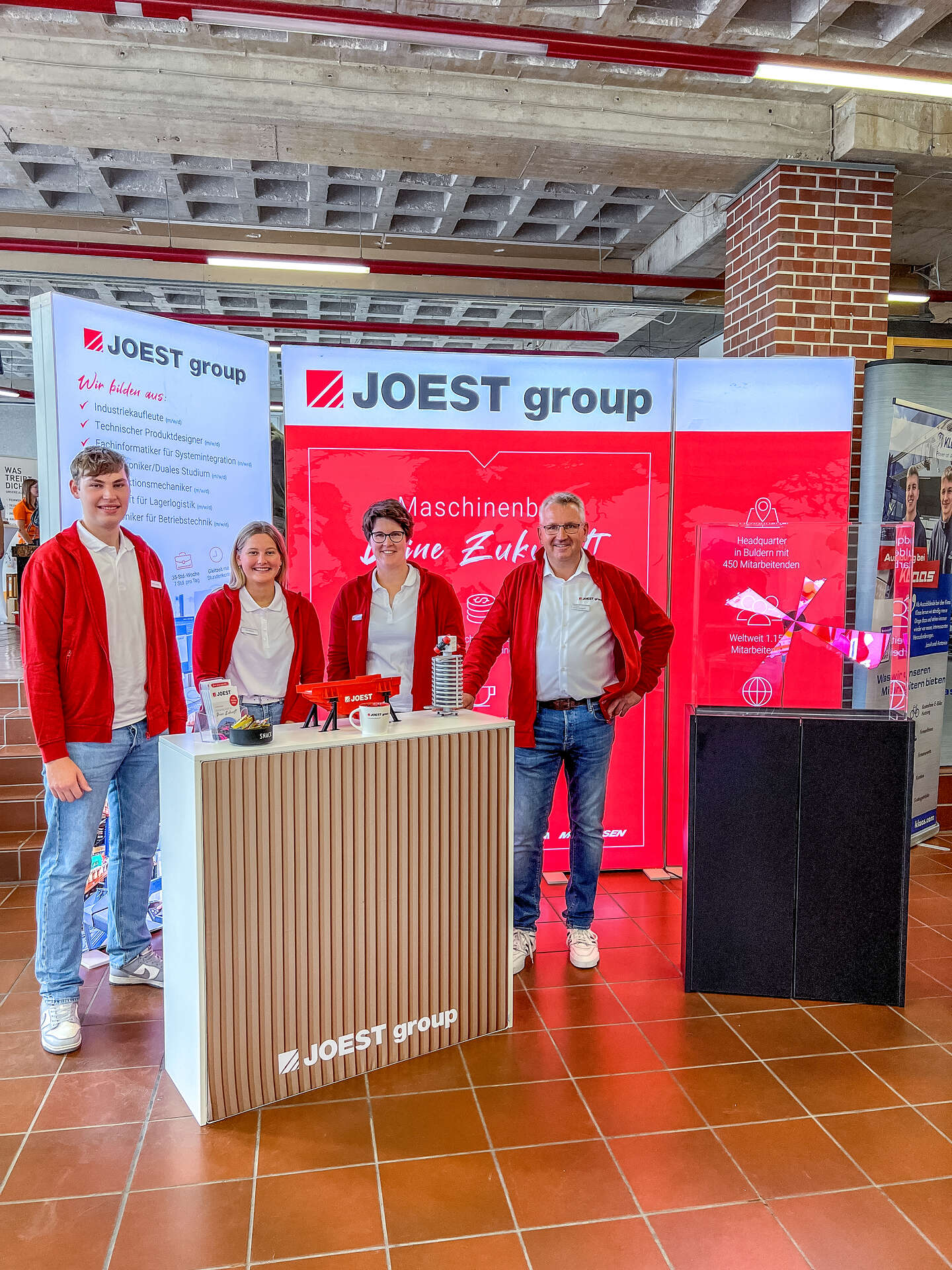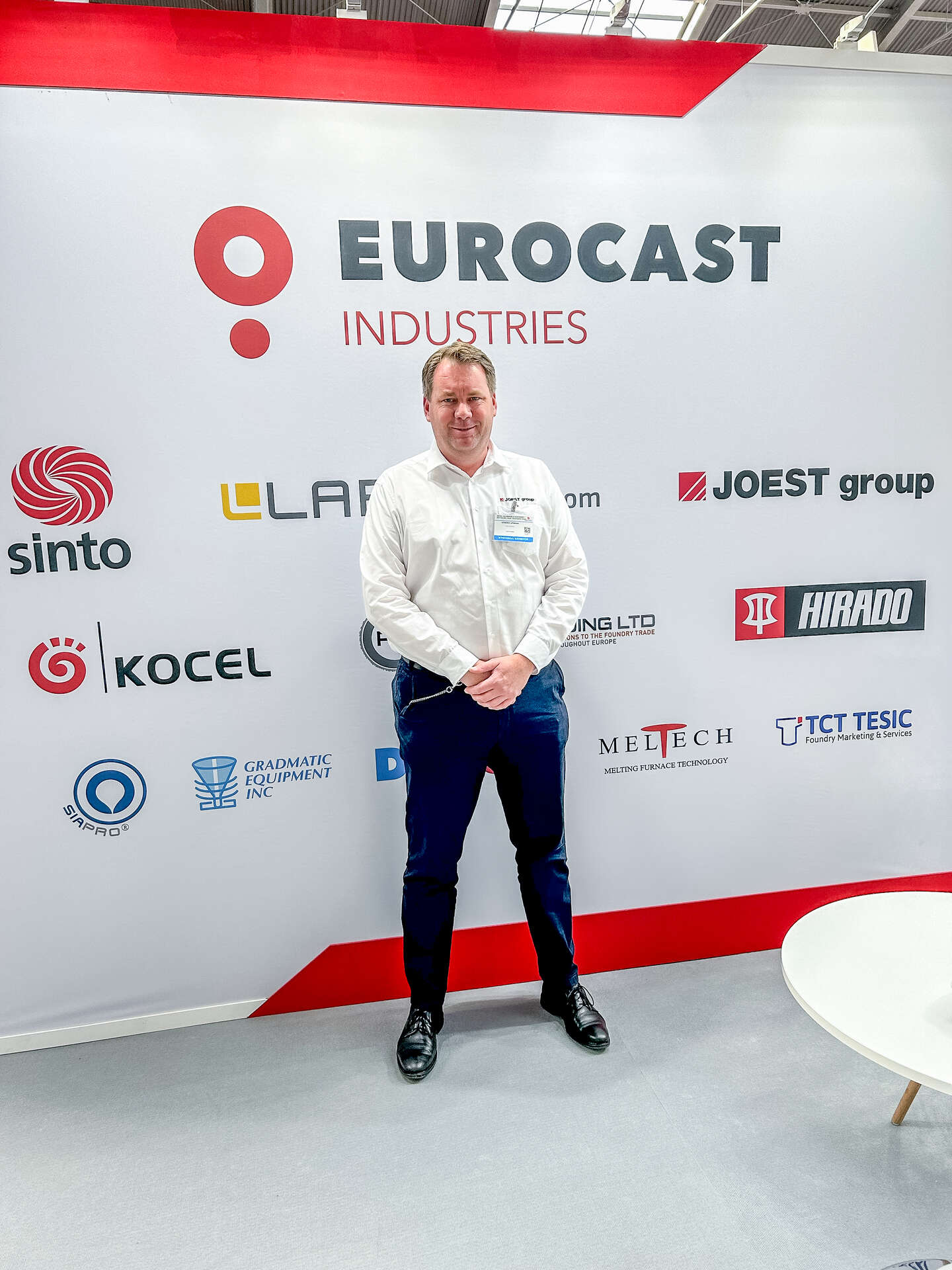MINING, MINERALS & QUARRYING
Handling of iron ore in a small space

In the middle of June 2017 JOEST delivered two hopper discharge feeder with very high process engineering and installation requirements.
The international Mining Company is operating a plant for processing iron ore for several years. For the separation of magnetic components from the fine iron ore fraction, magnetic conveyors have been used so far for feeding the three meter wide sorting devices. These vibrating conveyors extract product controlled from an intermediate storage bin at the same time. Two process steps are handled by one machine.
The geometrical installation situation between bin and sorting device provides a 3 meter wide and only 1.4 meter long vibrating conveyor for each unit, which – also due to further stationary peripherals – must be adapted to the height of the situation. On the one hand, the machine had to be designed in such a way that it regulates the product flow from the bunker, but on the other hand also with stands the head load from the bunker. In addition an even product distribution over the width with low layer thickness must be secured. These process engineering requirements in combination with the structural crowded situation showed technical problems when using the magnetic resonance conveyor technology.
JOEST was selected to design and build an individual hopper discharge feeder in massive construction. Due to the harsh conditions in this mine, a special heavy duty design was required. In this case, unbalanced motors have been used, which can be operated at variable speed in combination with a sufficient power reserve and frequency converter. The flexible use of JOEST standard components ensures high operating safety and long service life. The machine section on the outlet side is in stainless steel because of the magnetic field. Due to the tight space requirement below the machine, the vibrating conveyor is completely displaced by cable suspensions. The drive beam has been slightly moved backwards in order to be able to build the feeder flatter and more compact and to avoid integration problems. Once again the JOEST team made clear that it can work out the right solution for every customer.
Weitere Beiträge
The Berfus Info Exchange 2024 in Nottuln at the Liebfrauenschule was a complete success for us at JOEST and a great opportunity to get in touch with many committed young people. As an internationally active company, we are always happy to introduce young talents to our diverse training and career opportunities.
The Hey Job Apprentice Bus Tour 2024, which took place on October 10, was a complete success. Pupils from secondary schools in Dülmen had the opportunity to visit a total of 14 local companies on five different routes. The tour was organized by the City of Dülmen’s business development department and offered pupils in the 9th and 10th grades an ideal opportunity to introduce themselves directly to companies and gain an insight into various training occupations.
On 25.09.24, our #JOESTeam was at the “Anschub” training fair at Richard-von-Weizsäcker-Berufskolleg in Lüdinghausen!
We look back on a successful exhibition! The JOEST group was proud to be part of the EUROCAST booth – our Polish representation – at the Metal Expo in Kielce, and we would like to thank everyone who visited us at our stand!






